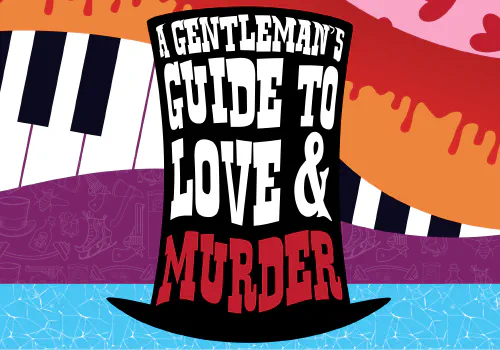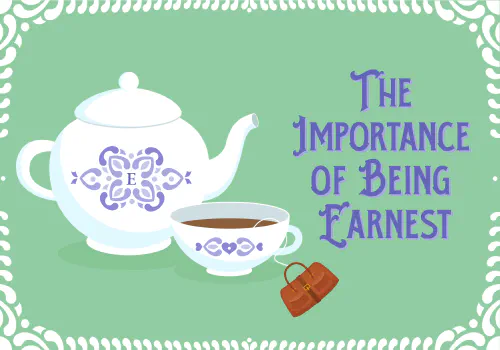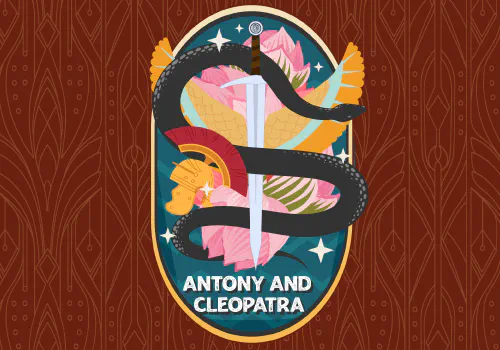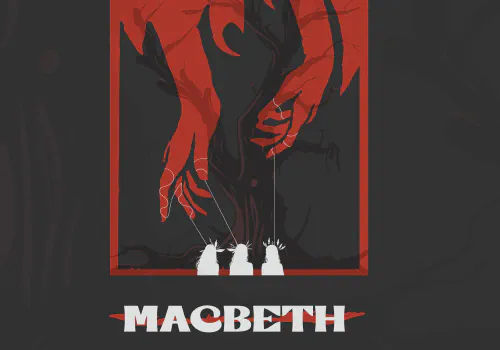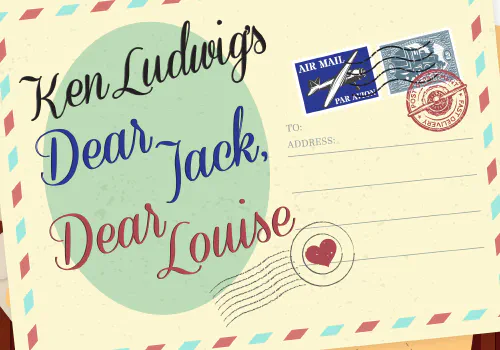The Man, the Myth, the Legend
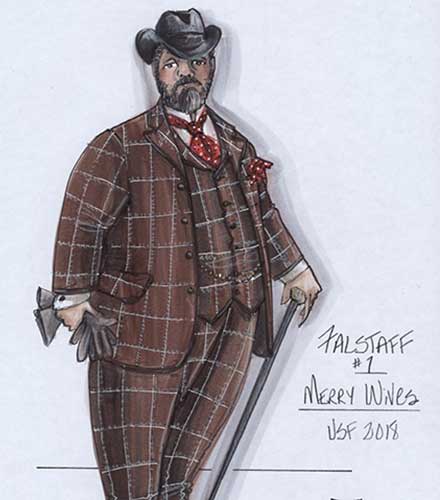
Falstaff costume design by Bill Black
By Kathryn Neves
The Merry Wives of Windsor has always been a favorite at the Utah Shakespeare Festival. After all, who doesn’t love watching the antics of a ridiculous old man and two clever, witty women? The play is one of the most lighthearted of all of Shakespeare’s comedies, full of silly jokes, tricks, and mischief. At the heart of it all is Sir John Falstaff, perhaps the most famous of all of Shakespeare’s buffoons and definitely one of the most beloved.
Falstaff is interesting in that he is the only character in the Shakespeare canon to appear across genres; rather than being sequestered into the histories of King Henry IV, John Falstaff crosses the bounds and appears in a delightful comedy that barely even references the history that Falstaff is such a big part of. How did Falstaff become such a beloved character? Why would Shakespeare write an entire spin-off featuring this minor character from Henry IV Part One and Henry IV Part Two?
It’s easy to recognize Falstaff in any portrayal; he’s the one with the huge snowy beard, enormous belly, a bottle of sack, and a penchant for cowardice and dishonesty. Still, even with all of his faults, Falstaff has become a well-beloved character for audiences throughout the centuries— perhaps even because of his faults. After all, once we’ve seen the heroic deeds of the royalty and the nobility, it can be a relief to see someone a bit more comedic.
Falstaff is introduced to the world in Henry IV Part One as a companion to the young, unruly Prince Hal; the two spend most of their time carousing in the Boar’s Head tavern. Though we at times see some thoughtfulness from young Prince Hal, Falstaff rarely thinks about more than wine and women. He’s constantly the butt of jokes and the subject of pranks— something we see echoed in The Merry Wives of Windsor, as the entire plot revolves around Mistresses Ford and Page tricking the knight into laundry baskets, disguises, and beatings.
He makes his next appearance in Henry IV Part Two, still the same bumbling rogue that we know and love, but growing more distant from Prince Hal. In fact, the play ends with Falstaff being cast off from the newly crowned king— “I know thee not, old man: fall to thy prayers; / How ill white hairs become a fool and jester!” (5.5.3640-41). With these cruel words, Falstaff is banished. And when Falstaff dies in Henry V, it’s because of his broken heart: “The king hath run bad humours on the knight, that’s the even of it. . . . His heart is fracted and corroborate” (2.1.121-22, 124).
The Merry Wives of Windsor is like a spin-off from the history plays; it has nothing to do with the real history of England, but was only written for Falstaff to make a reappearance. We know Falstaff was a popular character, and he might have been a favorite of Queen Elizabeth I herself! Multiple sources say that she demanded another play starring Falstaff and requested that Falstaff fall in love. And of course, that is where “Merry Wives” comes in. Though Falstaff isn’t really in love, we get to see his escapades in pursuing the various women of Windsor.
After watching the Henry plays over the last several years and looking ahead to The Merry Wives of Windsor, it would be easy to assume that Falstaff is completely fictional. After all, such a colorful, ridiculous character couldn’t have any basis in reality, could he? Actually, he isn’t all fantasy. It’s pretty widely accepted that the character of John Falstaff was based on the real-life knight and prince’s companion, Sir John Oldcastle. Oldcastle, though most of his life is lost to history, was known as a supporter of Prince Henry and a scandalous rogue famous for his heresy. In the earliest drafts of Henry IV Part One, Falstaff wasn’t called Falstaff at all, but Sir John Oldcastle. However, after several of Oldcastle’s descendants complained of Shakespeare’s negative portrayal, he changed the name of the character to Falstaff— modelled after another historical knight, John Fastolf (who, incidentally, makes an appearance in this season’s Henry VI Part One).
Even though he’s a rogue and a scoundrel, Falstaff is undoubtedly one of the best characters Shakespeare created. He’s ribald, hilarious, and a bit of the Everyman, and he will be a great source of entertainment for playgoers this summer.


